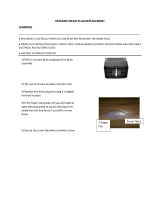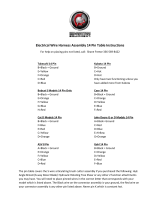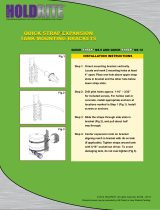
Page 1 - 2
Safety
Groundsmaster 3500
While Operating
1. Always wear your seat belt.
2. Do not run the engine in a confined area without ade-
quate ventilation. Exhaust fumes are hazardous and
could be deadly.
3. Sit on the seat when starting and operating the ma-
chine.
4. Check interlock switches daily for proper operation
(see Chapter 5 - Electrical System). Do not rely entirely
on safety switches: shut off engine before getting off
seat. If a switch fails, replace it before operating the ma-
chine. The interlock system is for your protection, so do
not bypass it.
5. Operator must be skilled and trained in how to drive
on hillsides. Failure to use caution on slopes or hills may
cause vehicle to tip or roll, possibly resulting in personal
injury or death.
6. This triplex mower has a unique drive system for su-
perior traction on hills. The uphill wheel will not spin out
and limit traction like conventional triplexes. If operated
on a side hill that is too steep, rollover may occur before
losing traction.
7. Before backing up, look to the rear and assure no
one is behind the machine. Watch out for traffic when
near or crossing roads. Always yield the right of way.
8. Keep hands, feet and clothing away from moving
parts and the deck discharge area.
9. Establish special procedures and work rules for un-
usual operating conditions (e.g. slopes, sand traps, wa-
ter hazards). Survey the m owing site completely to
determine which areas can be operated on safely. When
performing this site survey, always use common sense
and take into consideration the turf condition and the
rollover risk. To perform a site survey, follow the proce-
dure outlined in the Operator’s Manual.
Stay alert for holes in terrain and other hidden hazards
which can cause a sudden change in side hill angle. Use
extreme caution when operating close to sand traps,
ditches, creeks, steep hillsid es, or other hazards. Re-
duce speed when making sharp turns. Do not turn on
hills. Avoid sudden stops and starts. Use reverse pedal
for braking. Cutting units must be lowered when going
down slopes for steering control.
10.When starting the engine:
A. Engage parking brake.
B. Be sure traction pedal is in neutral and blade drive
is in disengage position.
C. After engine starts, release parking brake and
keep foot off traction pedal. Machine must not move.
If movement is evident, the neutral control linkage is
incorrectly adjusted: therefore, shut engine off and
adjust until machine does not move when traction
pedal is released (see Adjust Traction Drive for Neu-
tral in the Adjustments section of Chapter 4 - Hy-
draulic System).
11. This product may exceed noise levels of 85 dB(A) at
the operator position. Ear protectors are recommended
for prolonged exposure to reduce the potential of per-
manent hearing damage.
12.Raise the cutting units when driving from one work
area to another.
13.Do not touch engine, muffler, exhaust pipe or hydrau-
lic tank while engine is running or soon after it has
stopped because these areas could be hot enough to
cause burns.
14.If a cutting unit strikes a solid object or vibrates ab-
normally, stop immediately. Turn engine off, wait for all
motion to stop and inspect for d amage.
15.Before getting off the seat:
A. Move traction pedal to neutral.
B. Set the parking brake.
C. Disengage the cutting units and wait for the
blades to stop spinning.
D. Stop the engine and remove key from the ignition
switch.
16.Whenever machine is left unattended, make sure
key is removed from ignition switch and parking brake
is set.























